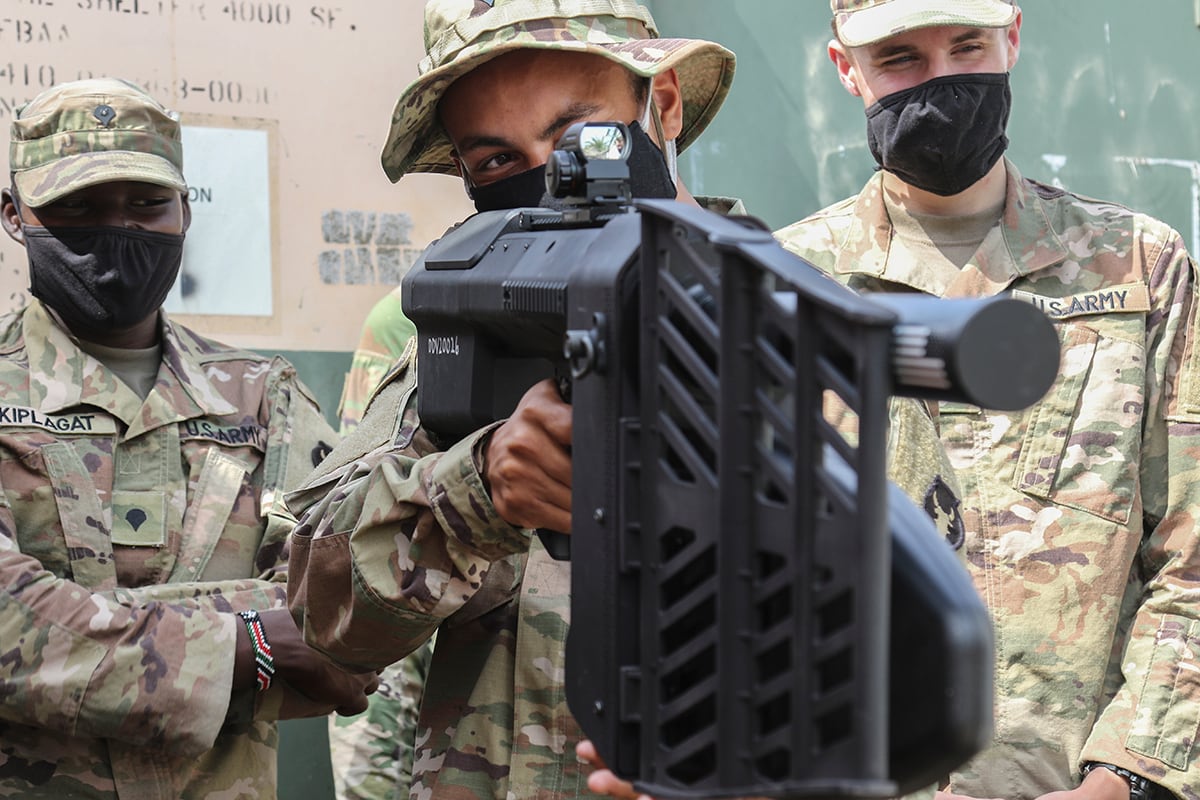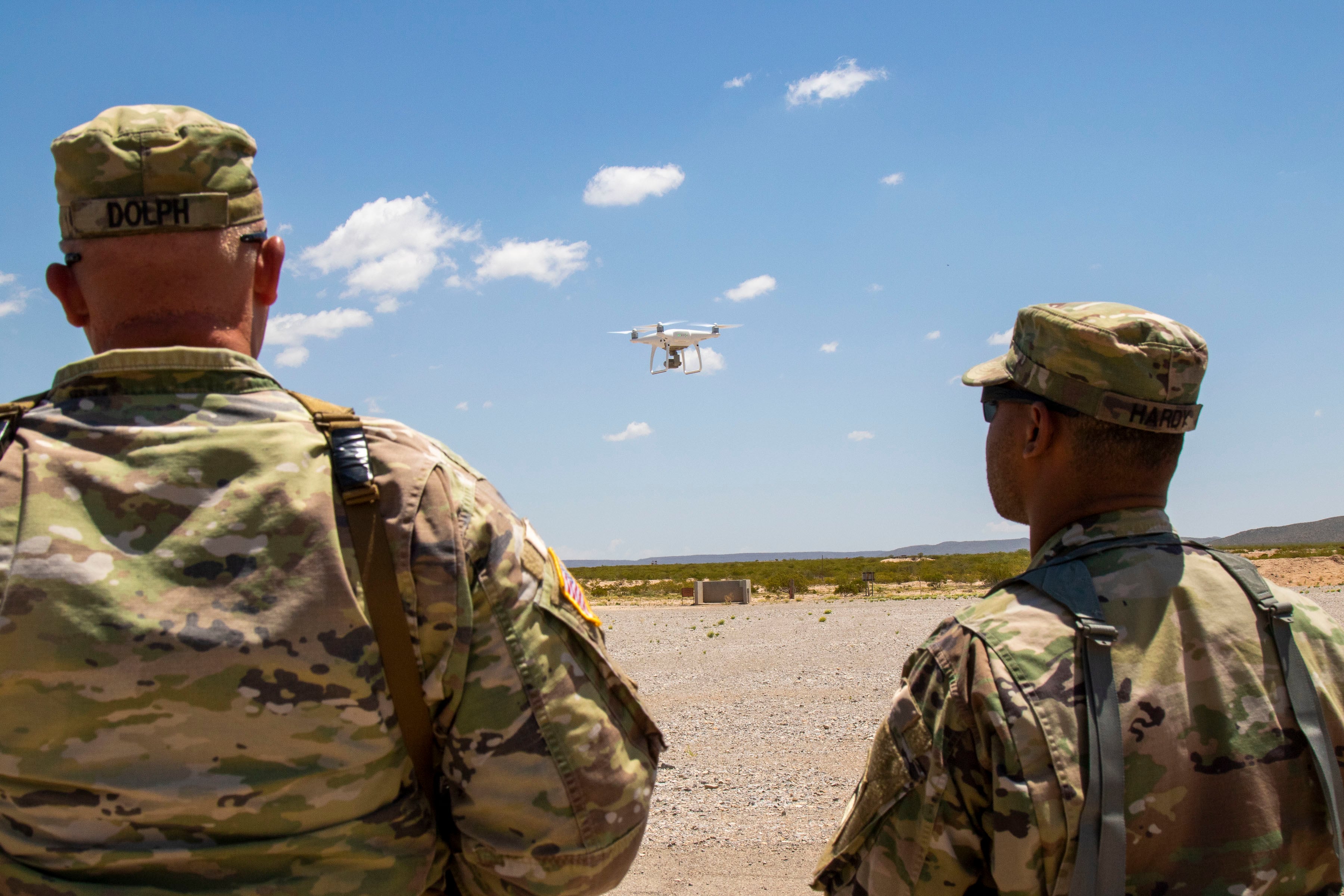MILAN – As technological improvements make drones smaller, more affordable and harder to detect, manufacturers of counter-drone technologies say defenses need to be effective regardless of type, aka “drone agnostic.”
China established itself as a leader in the public safety marketplace, primarily through the production of commercial drones from Da Jang Innovations, known as DJI. A 2019 report found that 73 percent of public safety unmanned aerial systems operators in the U.S. were flying the DJI Mavic series, and by 2021, the company reportedly controlled as much as 90 percent of the North American consumer market.
Rising geopolitical tensions have frayed relations between the U.S. and China, and American government officials are expressing alarm over the widespread use of Chinese UAS in the country. In a letter to the Cybersecurity and Infrastructure Security Agency sent in March, lawmakers warned that DJI could be providing “richly detailed, regularly updated pictures of our nation’s pipelines, railways, power generation facilities and waterways,” to the Chinese government.
RELATED

Matt McCrann, CEO of DroneShield, an Australian and U.S. maker of the “DroneGun” and other counter-UAS tech, said that while Chinese products still dominate in this market, any C-UAS system must be able to defend against any type of drone.
“C-UAS solutions need to be drone agnostic, meaning that they can detect, and when authorized, defeat more than just DJI drones,” he said.
The company this month introduced the “DroneGun Mk4,” a portable countermeasure with enhanced range and upgraded features such as low-size weight and power (low-SWaP).
The expansion of use cases across federal agencies is primarily due to the rise of drones being used to carry out criminal activities in or around airports, prisons and other critical infrastructure, creating an ever-present potential threat. Full production of the Mk4 is expected to be reached in the second half of 2023.
“We are seeing a significant uptick in the number of federal end-users [for DroneGuns] both domestic and international who have active counter-drone requirements and whose authority to operate is expanding,” said Tom Branstetter, director of business development at DroneShield.
Drone guns in Ukraine
Anti-drone guns have gained important traction as effective gap-fill or last mile countermeasure. More companies are coming out with their own versions, such as a recent new player in this space, Ukraine’s Kvertus Technology. The firm has developed the KVS G-6, which uses radio-signals to jam Russian systems.
“We are starting to see a lot of consolidation in the C-UAS space, with now a lot of quality systems available today. But, there is not a one-size-fits-all approach to the challenge of drone threats,” Branstetter said. “The key is the ability to implement those technologies collaboratively and in a way that provides the greatest level of capability while simultaneously meeting key customer requirements.”
DroneShield’s guns have reportedly been used by the Ukrainian military since the early days of the war. When asked whether the latest variant would be provided to troops, McCrann said that “the Mk4 has a clear application for Ukraine and can add immediate value to their counter-drone efforts, we’ll continue to standby to support however we can.”
Key considerations of the platform that could be beneficial for the Ukrainians and other end-users is its overall form factor and component design. Not wanting to burden users with having to learn and operate an overly complex system, especially as they often operate multiple technology kits in the field, it is designed to leverage muscle memory established with other weapons.
“It provides similar components that are very familiar to military and security personnel. This familiarity becomes especially important when under stress, the design simplicity allows any operator to deploy it at a moment’s notice,” Branstetter said.
RELATED

Shrinking the form factor of any C-UAS weaponry can lead to trade-offs, including limiting the range at which they are effective, forcing operators in some cases to get closer to the threat to neutralize it.
As for the future of this technology, the company executives said that users need layered options to stay ahead of developing threats, whereby unmanned systems are already a multi-domain danger as seen through recent developments in autonomous underwater platforms or unmanned ground vehicles.
“C-UAS solutions, strategies and requirements are not really focused on countering potential multi-domain at scale yet, but we will see that shift soon,” McCrann said.
Elisabeth Gosselin-Malo is a Europe correspondent for Defense News. She covers a wide range of topics related to military procurement and international security, and specializes in reporting on the aviation sector. She is based in Milan, Italy.








